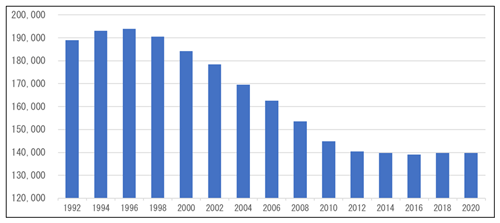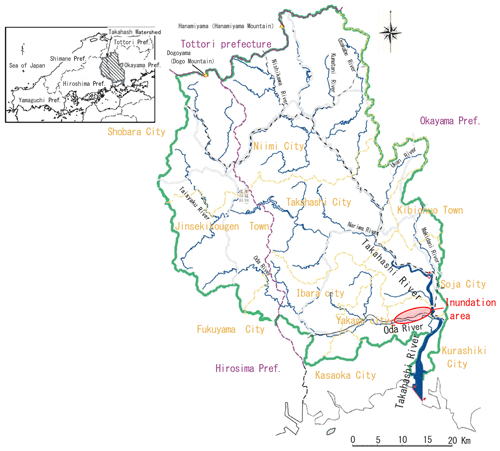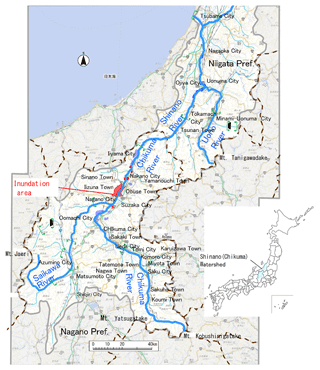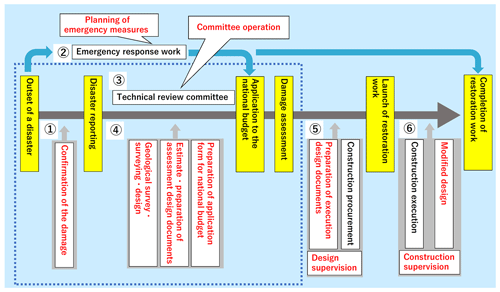the Creative Commons Attribution 4.0 License.
the Creative Commons Attribution 4.0 License.
The role of construction consultants in disaster recovery
Minoru Kamoto
Akira Nakamura
Masashi Ogura
Disaster recovery requires speed above all, and the public and private sectors need to work together. In the event of a disaster, the activities of the construction industry play a crucial role. Construction consultants, surveying companies, and geological survey companies play an important role. Construction consultants oversee the entire process of disaster recovery, from assessing the damage immediately after the disaster to managing the restoration work. In some cases, local governments order construction management services to supervise the entire disaster recovery work, and in such cases, construction consultants are even responsible for part of placing construction procurements. In this way, construction consultants have become an indispensable part of the disaster recovery process. This report is an introduction to the activities of construction consultants in times of disaster, using the heavy rains situations as examples, and presents of challenges and recommendations.
- Article
(3172 KB) - Full-text XML
- BibTeX
- EndNote
Japan has high precipitation, mountainous terrain with looming plains, and rushing rivers. As a result, the country has always been prone to flood disasters. Recent climate change has caused extreme precipitation events, increasing the frequency and intensity of disasters. Population and assets are concentrated in the plains, which account for only a small proportion of the country's total land area, and flood control measures are extremely important for the stability of the population.
Although the civil engineering departments of central and local governments have been primarily responsible for all aspects of flood control, including research, framing, planning, construction, and management, their organizations have been downsized and weakened, especially in municipalities, and public agencies are seemed to shift their work from being proactive in specific tasks to focusing on public relations and procurement. Therefore, it is more important than ever for the public and private sectors to work together to ensure the steady and robust practical operations.
At the same time, science, technology, and project operation and management methods are evolving, and it is important to create paths for further development and utilization of these through cooperation between the public and private sectors. The construction industry has been receiving procurements from public organizations and supporting social improvements for many years and has accumulated a wealth of experience in this field. Construction consultants (CC) have accumulated and honed their knowledge through many years of research, framing, and planning, and there are many talented individuals who can play an active role in the industry.
This paper describes how CC are playing an active role in disaster recovery and reconstruction, presents challenges and prospects.
2.1 Response to the July 2018 torrential rain disaster, on the Oda River system (Kurashiki City, Okayama prefecture)
2.1.1 Outline of the disaster
From the end of June to early July 2018, a rainy season front stagnating near Japan and typhoon No. 7 over the South Sea caused record-breaking torrential rains over area nationwide, mainly in western Japan. As a result, rivers overflowed and mudslides occurred simultaneously over a wide area, with 52 people were killed, and 5977 houses were damaged, partially, and fully in Kurashiki city, where Mabi is located (Okayama prefecture, 2020). In addition, the damage to lifelines such as electricity, water and sewage systems, and transportation infrastructure in the urban centres caused extensive socioeconomic damage. Figure 1 shows Takahashi and Oda River Basin.
2.1.2 Survey of damage situation
The Oda River in the Takahashi River system and its tributaries were damaged by torrential rains on 5 and 6 July 2018, and a committee was established to investigate the cause of the damage and to study restoration methods, etc. The committee conducted a survey of the damage on 10 July. The CC conducted a joint on-site survey and, under the 30 direction of the procurer, conducted a trace water level survey, soil investigation, and simple sketches at the breach points to collect information for the investigation of the cause of the damage and the study of countermeasures (JCCA, 2019, 2022).
2.1.3 Investigation of the cause of the damage and basic policy for countermeasures by the Oda River Levee Investigation Committee
Based on the results of the field survey, the Oda River Levee Investigation Committee held five meetings, including a field survey, to analyse the causes of the damage and to formulate a basic policy for countermeasures at the section where the levee broke. In the committee meetings, the CC handled the field survey and geological survey, levee stability study related to seepage, composition, and verification of the general situation of flood (water level, flow volume, and plane flow), and verification of the inundation through flood analysis (setting the inner and outer water levels of the levee) under a tight schedule. Prepared materials and assisted in committee operations based on the results of the studies.
2.1.4 Examination of special projects
On 7 September, MLIT (Ministry of Land, Infrastructure, Transport and Tourism), CRDB (Chugoku Regional Development Bureau) announced that the Oda River confluence will be replaced to 4.6 km downstream of Takahashi river and that the Oda River will be excavated and its banks strengthened, and branch rivers banks will be raised and strengthened through intensive river improvement projects that will be implemented over approximately five years in order to safely carry the river flow volume caused by the future same heavy rainfall as this time. The CC will work with the MLIT CRDB and Okayama Prefecture on the project. The CC assisted in preparation of the project plan by studying the target flow volume, improvement menu, drawing, and project cost calculation under the tight schedule (Das et al., 2023).
2.2 Response to the torrential rain disaster caused by typhoon No. 19 in 2019, on the Chikuma River (upstream name of the Shinano River system)
2.2.1 Outline of the disaster
On 12 October 2019, a typhoon hit the Izu Peninsula, resulting in “Typhoon no. 19 torrential rainfall in 2019” which caused record-breaking rainfall in a wide area of Shizuoka and Niigata prefectures, the Kanto Koshin and the Tohoku region, with 99 were killed, 67 985 houses completely or partially destroyed (Fire and Disaster Management Agency, 2020). The Nagano Shinkansen Train Centre was flooded due to overtopping of the Chikuma River, which paralyzed the Hokuriku Shinkansen. Figure 2 shows Shinano and Chikuma river basin.
2.2.2 Immediate response to the disaster
CC voluntarily collected and organized meteorological and hydrological data on a real-time basis from publicly available information for basins where they might receive procurements and provided support for the prompt publication of an outline of the outflow of water and the effects of river improvement projects. In the Chikuma River, they also collected and organized data in the same way and monitored real-time images such as CCTV from offices and municipalities' websites to estimate the risk areas. These results were used to estimate flow volumes in the disaster. Based on these results, iso-rainfall maps, actual water levels, and flow volumes were prepared and used as materials for basin committees, etc., and for outlining outflows (JCCA, 2020).
2.2.3 Various studies for disaster application materials
MLIT has launched the “Emergency Flood Control Project”, in which the national government, prefectures, and municipalities concerned work together to implement hard and soft measures to prevent another disaster in the entire basin for rivers that have been severely damaged by floods in recent years. On 31 January 2020, the government announced that the Chikuma River, together with the downstream Shinano River, would be included in the Shinano River System Emergency Flood Control Project, in which the national, prefectural, and municipal governments work together to implement riverine measures, basin measures, and community development and soft measures at a cost of approximately JPY 180 billion over 10 years. Under a tight schedule, CC companies assisted in the study of the target flow volume, improvement menus, preparation of drawings, calculation of project costs, and preparation of application materials. In the study of the improvement menus, the damage situation was assessed through on-site inspections, and runoff analysis, water level calculations, inundation analysis, etc. were conducted and the proposed improvement menus were presented to procurers.
2.3 Comparison of Oda and Chikuma Rivers' case
Due to changes in rainfall caused by climate change, the Chikuma River (Shinano River) underwent a revision of the target discharge volume in the River Improvement Plan. Shinano River had to be examined over the entire length of the river. Oda River, in comparison, was a localized study. CC contributed to them from a technical standpoint. Since both Oda and Chikuma Rivers broke their levees, nationwide studies to improve the durability of levees are continuing, and CC's technical contributions for field surveys, experiments, and simulations are indispensable.
In both rivers, many activities were conducted by CC after the flood disasters. These are introduced as next.
Disaster recovery requires speed and a concerted effort by the public and private sectors. In times of disaster, the activities of the construction industry play a role from the occurrence of a disaster to the completion of restoration work. CC, surveying firms, and geological surveying firms, known as construction-related industries, play a particularly important role in disaster recovery. CC oversee the entire disaster recovery process, from the initial assessment of the damage immediately after a disaster occurs to the construction management of the recovery work. In some cases, local governments place orders for construction management (CM) services to supervise the entire disaster recovery work, and in such cases, CC may even be responsible for part of the procurement of the work. In this way, CC have become an indispensable part of the disaster recovery process. Figure 3 shows the flow of disaster recovery and the work of CC at the time of a disaster. The specific activities from (1) to (6) in Fig. 3 are written in the following, with the CC, surveying company, geological survey company, general construction company, and specialized construction company clearly identified.
(1) Confirmation of damage
“CC, Surveying companies (SC) including aerial surveying)” will conduct surveys and measurements to record the scale and situation of the damage when the topography is altered after the disaster due to emergency measures. Provide advice on evacuation of residents and road closures. Conduct monitoring of the damaged area. Planning of emergency countermeasures, which must be done urgently and quickly so as not to delay the emergency countermeasure work. In recent years, survey use new technologies such as UAVs. In case of a large-scale disaster, aerial surveying is conducted to confirm safety during lifesaving operations.
(2) Emergency response work
“General construction companies (GCC), specialized construction companies (SCC)” perform work that requires emergency response for safety after a disaster. This includes temporary restoration of levees and road reopening. The work is usually started immediately after the disaster, and usually takes place day and night. Safety checks are conducted during emergency work and after temporary restoration.
(3) Technical review committee
“CC, Geological survey companies (GSC)” will confirm the magnitude and damage mechanisms of floods and earthquakes prior to the main restoration, such as levee breaches and facility collapse due to flood, earthquakes, tsunami, and liquefaction. If necessary, Technical Review Committee (TRC) of academics will be formed to provide technical decision and support. CC and geological survey companies will conduct surveys and analyses in response to the T RC, which will be reflected in the restoration design.
(4) Preparation for the application of gov. budget
11CC, GSC, SCC” will conduct survey and design in a short time for disaster assessment and calculate construction costs. In the design process, they also plan the level of improvement and conduct necessary geological surveys. In the case of a large-scale disaster, support engineers are assembled from nationwide to deal with many issues in a short time.
(5) Design implementation and supervision
“CC, GSC, SC” conduct the design implementation for the main restoration. In the case of a large-scale disaster, a large amount of design work needs to be done in a short time, as deadlines are set for special emergency projects for severe disasters.
“CC GCC” provide Project Management (PM) and CM when there is a shortage of engineers from local governments or others.
(6) Restoration work and construction supervision
“GCC, SCC” will conduct the main restoration work. The deadline is set for special emergency projects for severe disasters. The work must be carried out in a short time.
“GCC, CC”, if any problems arise during the construction work, will consult with the parties concerned and make changes to the design as appropriate. They provide PM and CM when there is a shortage of engineers from local governments or others (JCCA, 2019; MLIT, 2022).
4.1 Decrease in the number of staff in the authority and to recommend CM method
In recent years, procurers have been required to ensure quality, reduce costs, and provide highly transparent contracts for public works projects, and their responsibilities have been increasing. In response to this, it has become necessary to make use of private sector which can appropriately perform procurement-related work, under the situation of significant decrease of the number of procurer employees in local public entities (see Fig. 4). Depending on the scope of support for procurement-related work, the “CM method” is the one in which part or all procurement-related work related to construction supervision is outsourced to the private sector, the “project promotion PPP (Public Private Partnership) method” is the another in which part of the procurement-related work is outsourced to the private sector from the investigation and design stages (MLIT, 2002).

Figure 4Number of staff at civil engineering department of local governments in Japan (Source: the Ministry of Internal Affairs and Communications' Survey of Capacity Management of Local Governments, Vertical axis is number of staff; horizontal axis is fiscal year).
The major challenge for the affected municipalities, which had no experience in procuring large-scale public works projects, was to establish a project implementation system necessary to start the project early and implement it in a short time. The affected municipalities placed the highest priority on the early start and completion of the projects. At the same time, it must be ensured transparency and fairness in the use of government funds and be fulfilled accountability to the public. Number of staff in the civil engineering department, which is responsible for public works projects in local governments, has decreased by approximately 55 000 (−28.4 %) since its peak in FY1996. For the Great East Japan Earthquake, Urban Renaissance Agency (UR) introduced CM method in the “Reconstruction and Urban Area Development Project” in 19 areas in 12 cities and towns, utilizing private-sector know-how to promote the project smoothly (MLIT, 2017). For the river improvement project on the Ouse and Natsui Rivers in Fukushima Prefecture, CM method was applied in a two-year lump-sum contract from April 2019 to March 2021 to expand the river area and reduce flood damage to houses along the rivers. CMR (construction manager) was involved in the entire process from basic planning, basic design, implementation design, site acquisition, construction procurement, and construction. As a result, procure system was secured, technical skills of young inhouse engineers were developed, the flood control safety level was improved, and coordination with many related organizations, including the relocation of obstructions and bridge attachments, was smoothly carried out.
CC work was like an essential job for science and technology. The disaster recovery and infrastructure could not be done without CC. CC have been increasing their competence by conducting substantial surveys and planning on a contract basis. Inhouse engineers in government are to focus on regulation (Kamoto, 2012) and logistic arrangement, losing the engineering skills these years. In addition, the number of those are decreasing. CC should substitute/cooperate more for public sector's work to lead the disaster-resilient nation. CC also themselves need to improve its ability for policy recommendations and techniques for proactive disaster management.
Figure 4 data is from https://www.mlit.go.jp/common/001231371.pdf (MLIT, 2024).
MK designed and conceived this study. MK, AN and MO collected data. MK analyzed and interpreted the results and drafted the manuscript. AN and MO drafted the figures. All authors reviewed the results and approved the final version of the manuscript.
The contact author has declared that none of the authors has any competing interests.
Publisher's note: Copernicus Publications remains neutral with regard to jurisdictional claims made in the text, published maps, institutional affiliations, or any other geographical representation in this paper. While Copernicus Publications makes every effort to include appropriate place names, the final responsibility lies with the authors.
This article is part of the special issue “ICFM9 – River Basin Disaster Resilience and Sustainability by All”. It is a result of The 9th International Conference on Flood Management, Tsukuba, Japan, 18–22 February 2023.
This paper is based on the one prepared for presentation at ICFM9. We would like to thank all the ICHARM members who were involved in organizing ICFM9. Shinji Egashira of ICHARM/GRIPS gave valuable advice. The flood damage situation at the Oda and Shinano Rivers and subsequent countermeasures were given by Kunihiro Yamada (Advisor to the Ministry of Land, Infrastructure, Transport and Tourism, Japan, at that time). Asao Yu and Hiroshi Matsuda, who compiled the disaster activity reports for 2018, 2019, Koichi Kuroyanagi advised PPP issues, at the Japan Civil Engineering Consultants Association. We would like to thank all those who supported us. The authors are solely responsible for the content of this paper.
This paper was edited by Miho Ohara and reviewed by two anonymous referees.
Das, S., Ishiwatari, M., Kanbara, S., Komino, T., and Shaw, R.: Lessons from Mabi: Five Years of Recovery from the 2018 Western Japan Flood, https://www.cwsjapan.org/2023/07/06/report_lessonsfrommabi (last access: July 2023), 2023.
Fire and Disaster Management Agency: Damage Caused by Typhoon No. 19 in 2019 and Heavy Rainfall Caused by a Frontal Line (65th Report), https://www.fdma.go.jp/disaster/info/items/taihuu19gou67.pdf (last access: 2 February 2020), 2020.
JCCA: Record of Construction Consultants' Activities in the Torrential Rain Disaster of 2018, https://www.jcca.or.jp/files/achievement/committee_report/saigai2019.pdf (last access: May 2019), 2019.
JCCA: Record of Construction Consultants' Activities in the Typhoon No. 19 Disaster in 2019, https://www.jcca.or.jp/files/achievement/committee_report/saigai18.pdf (last access: July 2020), 2020.
JCCA: White Paper P34, 131–136, https://ofiles.jcca.or.jp/files/achievement/annual_report/pdf/2022/wp2022_all.pdf (last access: August 2022), 2022.
Kamoto M.: Systematized River Management by River Administrator, http://whrm-kamoto.com/top.html (last access: August 2022), 2012.
MLIT: Guidelines for Utilization of the CM Method, https://www.mlit.go.jp/totikensangyo/const/1_6_bt_000215.html (last access: February 2022), 2002.
MLIT: Report of the Study Group for Verification and Future Utilization of the CM Method for Reconstruction of East Japan, https://www.mlit.go.jp/common/001181972.pdf (last access: March 2017), 2017.
MLIT: Guidelines for the Smooth Implementation of Disaster Recovery Projects in Municipalities, https://www.mlit.go.jp/river/shinngikai_blog/saigai_fukkyu/pdf/gaidrain.pdf (last access: 30 October 2022), 2022.
MLIT: Promotion of Work style reforms and Securing and developing mid- to long-term staff, https://www.mlit.go.jp/common/001231371.pdf (last access: 19 July 2024), 2024.
Okayama prefecture: July 2018 heavy rain disaster record book, https://www.pref.okayama.jp/page/653529.html (last access: March 2020), 2020.
- Abstract
- Introduction
- Case study of torrential rain disaster
- Engagements in large-scale disasters
- Challenges and recommendations
- Contribution to disaster prevention
- Data availability
- Author contributions
- Competing interests
- Disclaimer
- Special issue statement
- Acknowledgements
- Review statement
- References
- Abstract
- Introduction
- Case study of torrential rain disaster
- Engagements in large-scale disasters
- Challenges and recommendations
- Contribution to disaster prevention
- Data availability
- Author contributions
- Competing interests
- Disclaimer
- Special issue statement
- Acknowledgements
- Review statement
- References








